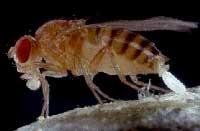And now, behind the genome, the proteome
2001/04/06 Roa Zubia, Guillermo - Elhuyar Zientzia
The desire to sell to the media has made many great things published about the human genome. But those who understand something about cell chemistry repeatedly advised it. Knowing the genome does not involve controlling human biology. To achieve this, at least, it is necessary to identify the proteins that encode the genome, determine its structure and functions and understand the interactions between proteins. Despite all this, it will be difficult to have complete control.
Taking advantage of the current image of science, some companies have seen the way to get rich. In the case of Genoma, the company Celera Genomics offered a magnificent exhibition. Each time he was interested, with the help of the media he published, he sequenced the entire human genome. Celera supported sensationalism. But even if we make it public on three occasions, let us not forget that genome sequencing has not yet been completed. There are many data available but not completed.
Seeing the opportunity, now a company called Myriad Genomics wants to take advantage of the next step of this competition. He has signed an agreement with Hitachi and Oracle to create a subsidiary called Myriad Proteomics. The new company will bring together Hitachi technology, Oracle software and Myriad scientists to conduct the human proteome study.
What will the proteome serve for?
Proteoma is a group of proteins in the body that, in general, are molecules that perform chemical reactions of life. The molecule that carries oxygen in the blood and divides glucose into the cell determines which compounds can be inserted into the cells and many others are proteins. There are many examples. Many diseases occur because some protein does not work well. Thus, both in medicine and biology and chemistry, great advances would be made if the functioning of the proteome is understood. Myriad is a company with a market goal, get information for the development of new medicines.
The problem is that the human proteome is made up of many proteins. In addition, it is essential to know what each protein should be associated with for proper work. To do this, Myriad will use two complementary methodologies. Based on the example of the company Celera want to start an extremely fast work system.
The first of these two methods is the so-called ProNet. This is an industrial version of the intermediate search for the two yeast hybrids. It is a method that studies the specific interactions between proteins. It gets information from genes that are activated together, identifying the activation points in the DNA chain. This method is not always successful, as it identifies many wrong activation points. However, they have managed to reduce the error of the latest method technology up to 1%. The ProSpec technique will also be used. This technique, based on mass spectroscopy, identifies protein complexes (active protein groups).
A rapid study of the proteome is expected from both techniques. However, C. According to biochemist Marc Vidal, who studies the proteome of the Elegans worm, the amount of information that can be obtained in about three years is very high, but it is not of the whole proteome. That's why the scientist's advice is not to make shocking announcements in the press. It is an absolutely prudent note. But in view of the history of the genome, it will surely not be necessary to ask for it.

Gai honi buruzko eduki gehiago
Elhuyarrek garatutako teknologia





